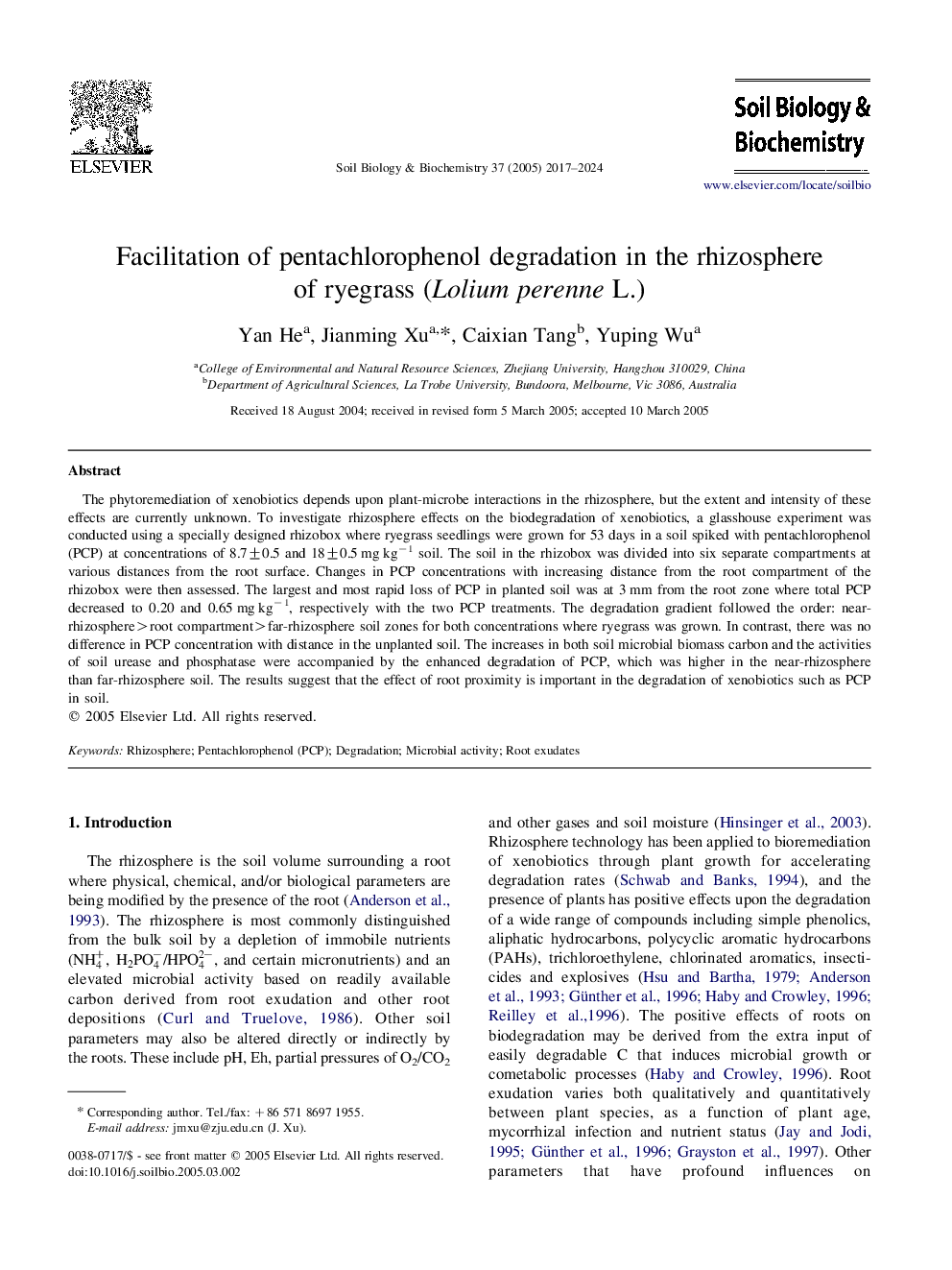| Article ID | Journal | Published Year | Pages | File Type |
|---|---|---|---|---|
| 2027246 | Soil Biology and Biochemistry | 2017 | 8 Pages |
The phytoremediation of xenobiotics depends upon plant-microbe interactions in the rhizosphere, but the extent and intensity of these effects are currently unknown. To investigate rhizosphere effects on the biodegradation of xenobiotics, a glasshouse experiment was conducted using a specially designed rhizobox where ryegrass seedlings were grown for 53 days in a soil spiked with pentachlorophenol (PCP) at concentrations of 8.7±0.5 and 18±0.5 mg kg−1 soil. The soil in the rhizobox was divided into six separate compartments at various distances from the root surface. Changes in PCP concentrations with increasing distance from the root compartment of the rhizobox were then assessed. The largest and most rapid loss of PCP in planted soil was at 3 mm from the root zone where total PCP decreased to 0.20 and 0.65 mg kg−1, respectively with the two PCP treatments. The degradation gradient followed the order: near-rhizosphere>root compartment>far-rhizosphere soil zones for both concentrations where ryegrass was grown. In contrast, there was no difference in PCP concentration with distance in the unplanted soil. The increases in both soil microbial biomass carbon and the activities of soil urease and phosphatase were accompanied by the enhanced degradation of PCP, which was higher in the near-rhizosphere than far-rhizosphere soil. The results suggest that the effect of root proximity is important in the degradation of xenobiotics such as PCP in soil.
